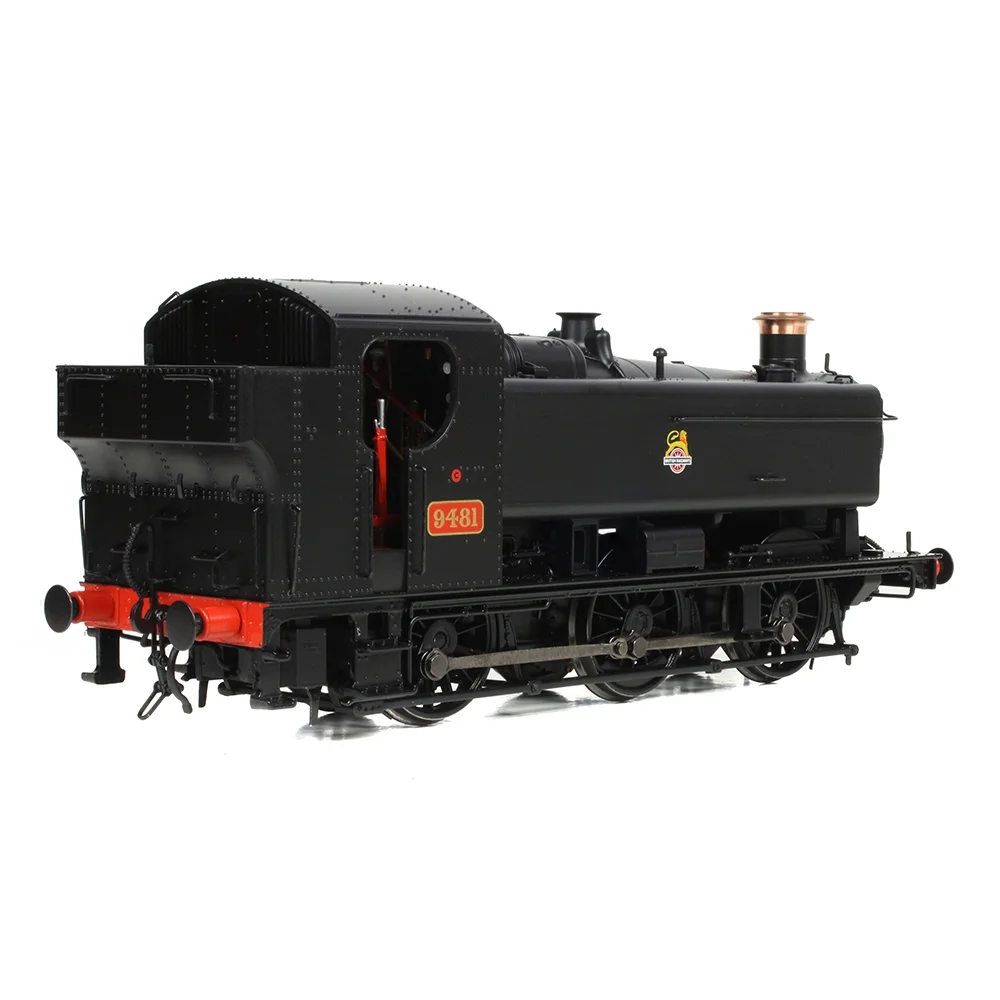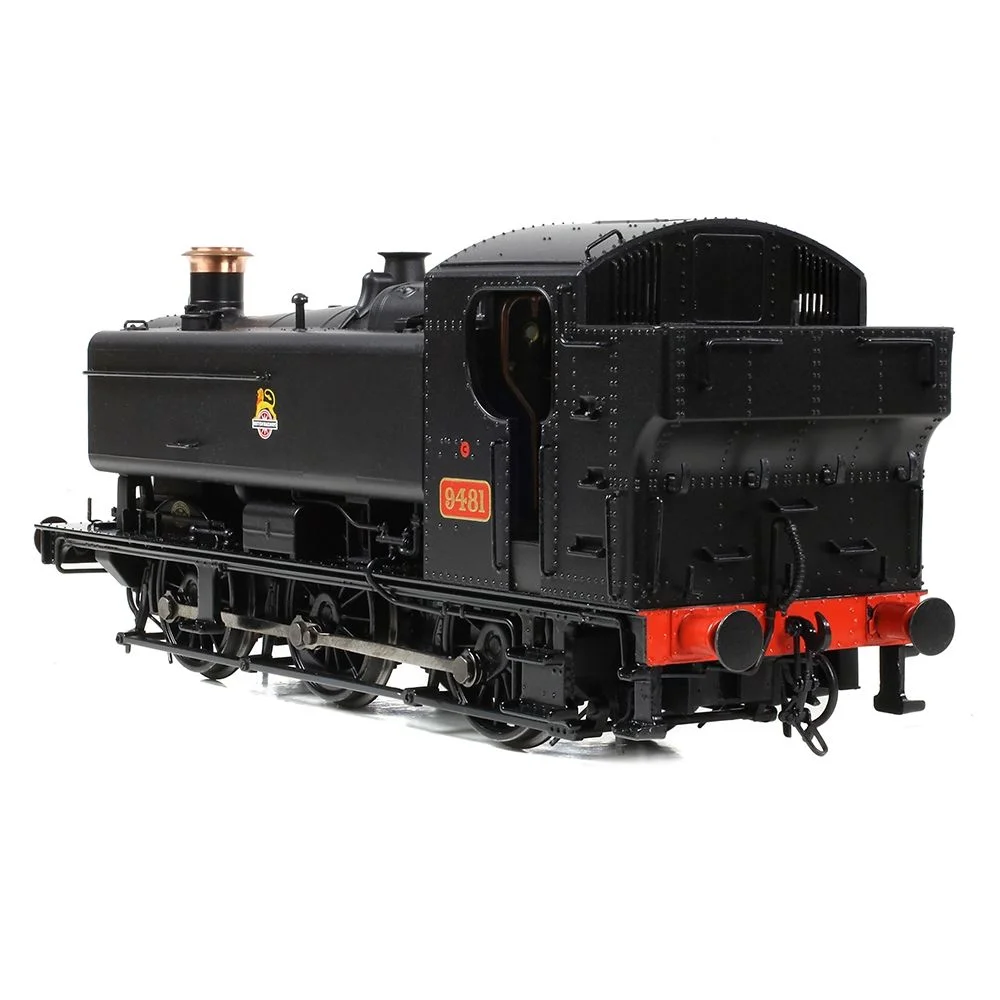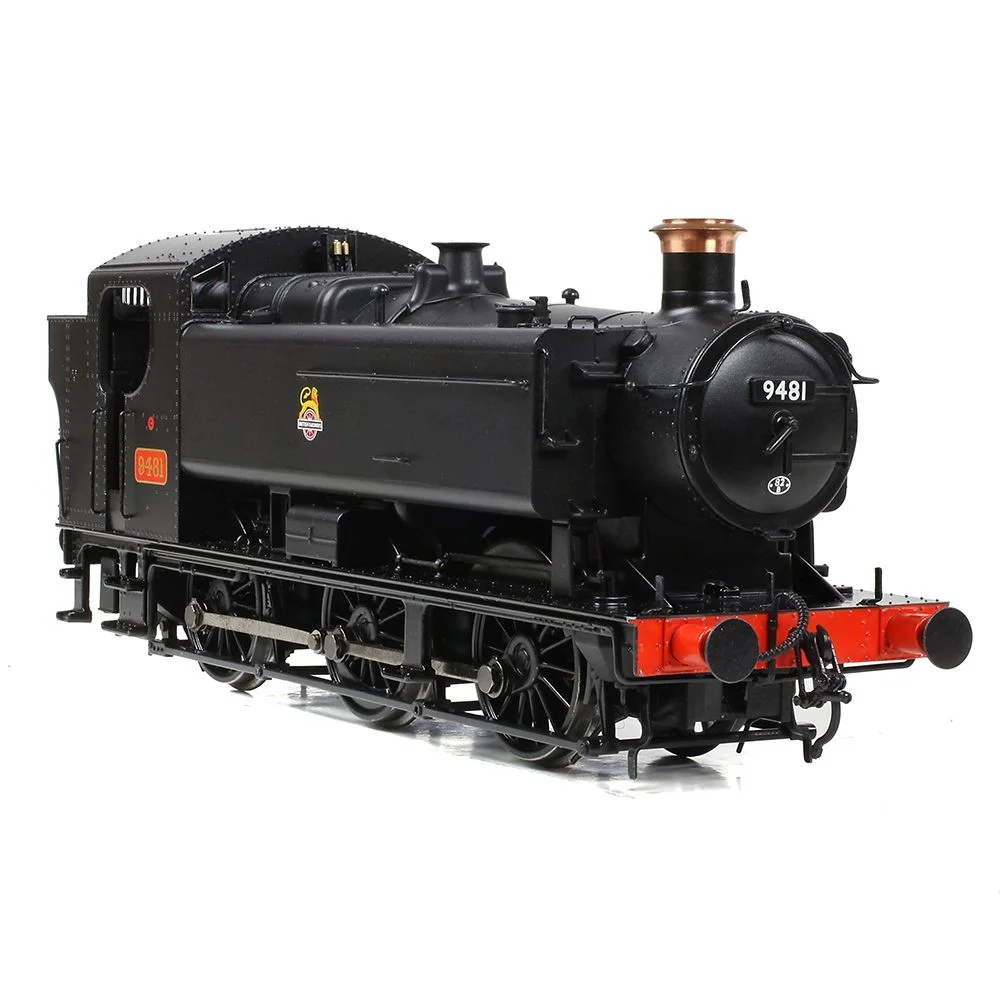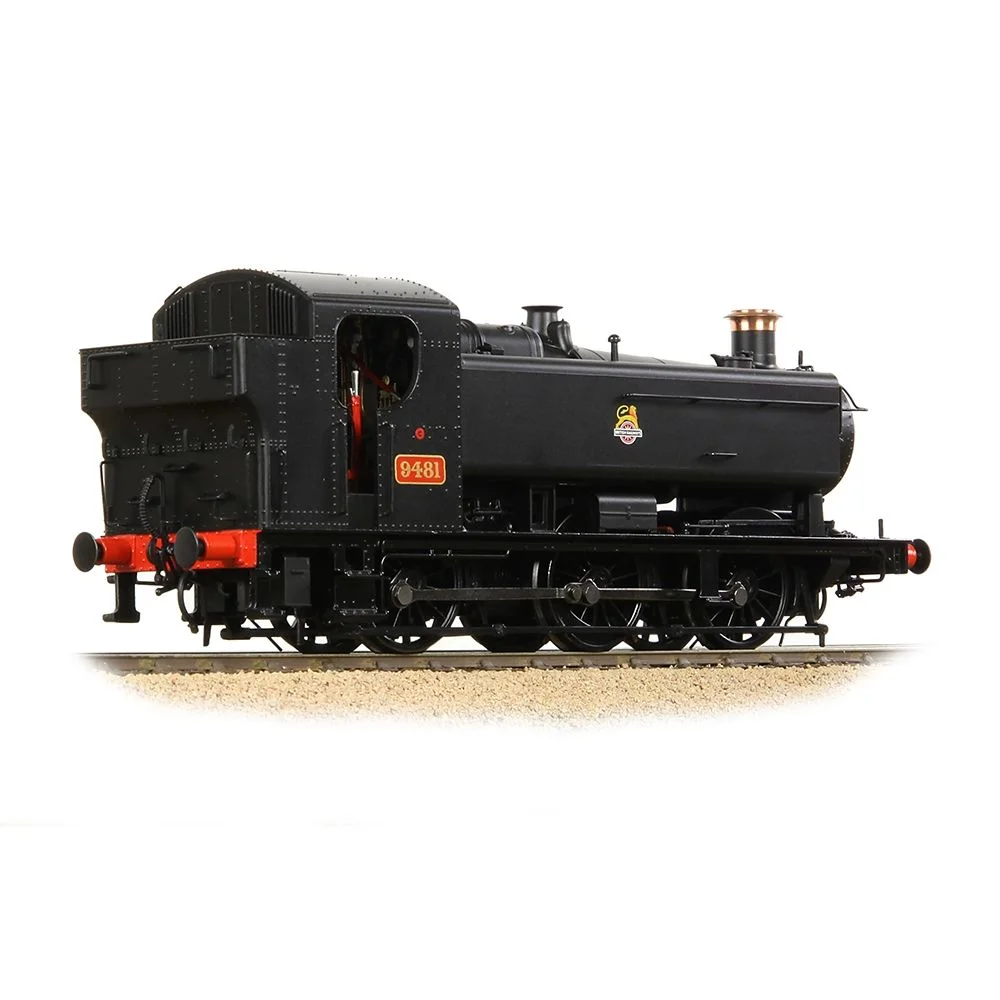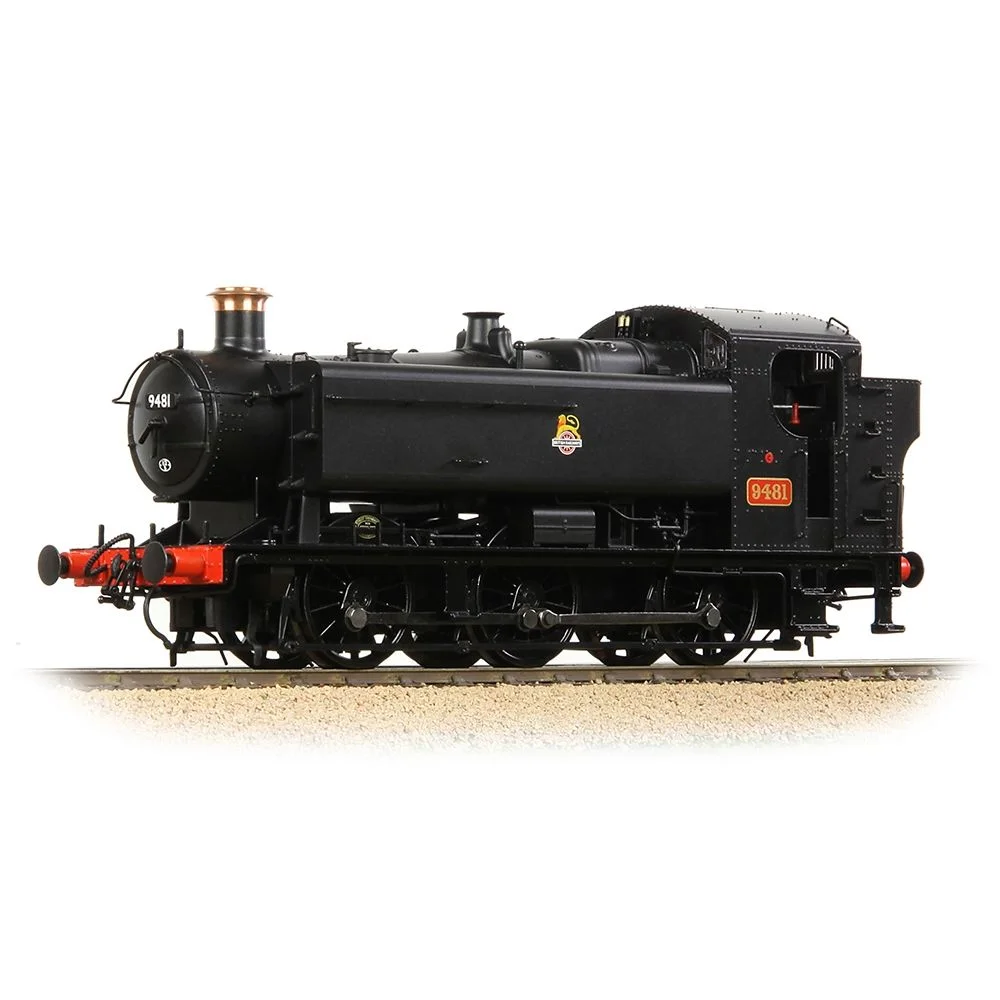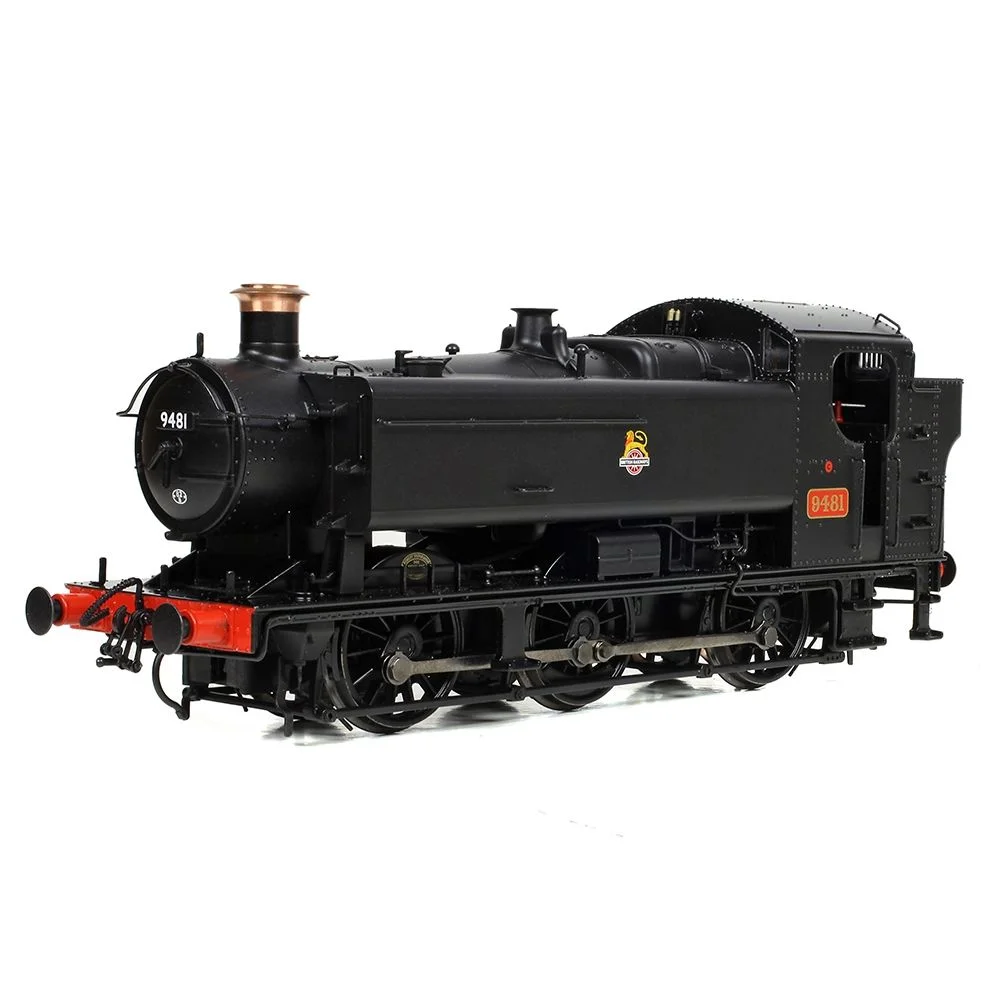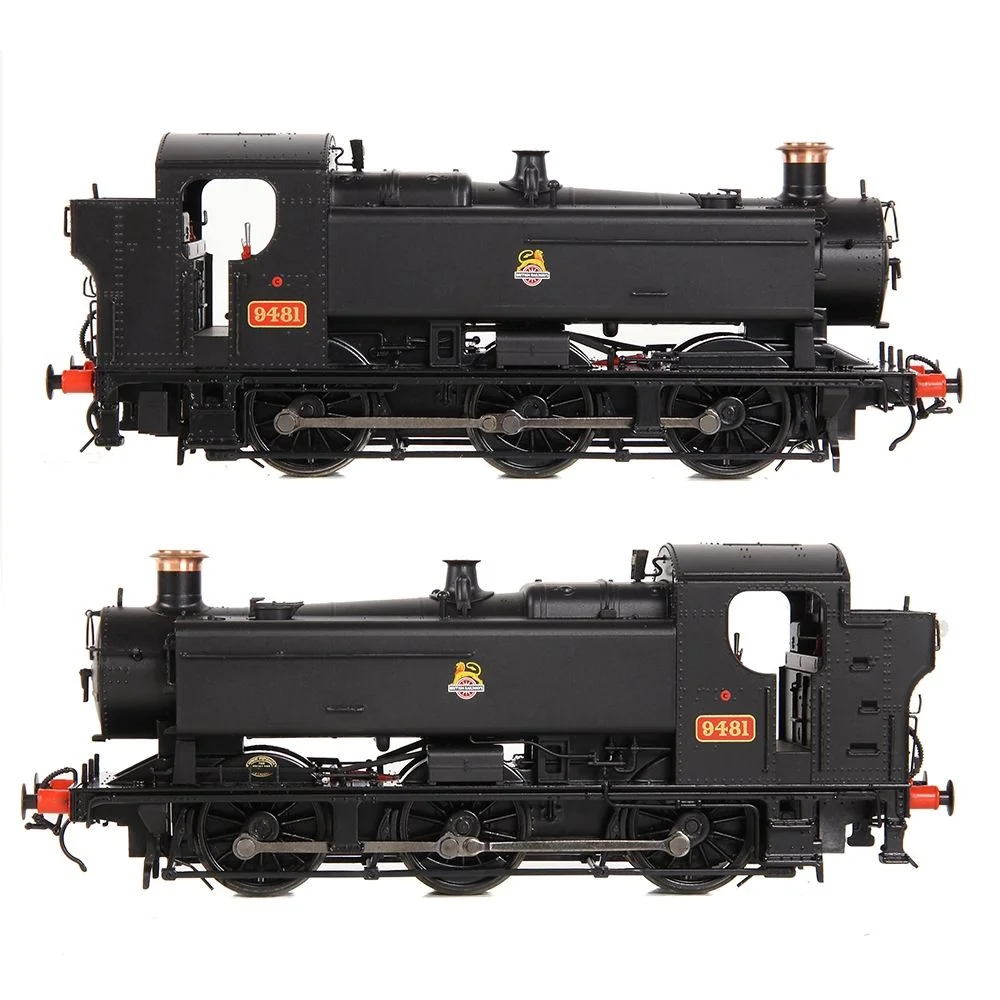Bachmann 35-026A
Great Western Railway 9400 9481 British Railways Black with Early Emblem
Tooling
The Bachmann Branchline GWR Class 94xx 0-6-0 Pannier Tank was introduced in 2015 as an all-new tooling, replacing older models and setting a new benchmark for detail and performance in OO gauge. The prototype locomotives were heavy freight pannier tanks built for the Great Western Railway and later British Railways, designed for shunting and short-distance freight duties.
Tooling Features
- Scale: 4mm:1ft (OO gauge)
- Construction: Die-cast metal chassis and body for weight and durability, with fine plastic detailing parts.
- Detailing: Separately fitted handrails, pipework, lamp irons, and fully detailed cab interior with painted controls.
- Buffers: Sprung metal buffers front and rear.
- Couplings: NEM coupling pockets with tension-lock couplers; accessory pack includes screw-link couplings and additional detailing parts.
Mechanical & Electrical
- Motor & Drive: Powerful coreless motor driving the rear axle via a precision gear train; all-wheel pickup and metal axle bearings.
- Minimum Radius: Suitable for 2nd radius curves (438mm) and above.
- Lighting: Firebox flicker feature in both analogue and DCC modes.
- Weighting: Approx. 280g for excellent traction and stability.
DCC Capability
- DCC Ready: Equipped with a Next18 decoder socket.
- Sound Options: Factory sound-fitted versions available using ESU Loksound decoders with synchronized exhaust beats and firebox glow.
Liveries Produced
The tooling has been released in a variety of authentic liveries, including:
- GWR unlined green with ‘GREAT WESTERN’ lettering
- BR black with early and late crests
- Special editions such as preserved No. 9400 for Locomotion Models
Reviews & Commentary
The 2015 Bachmann 94xx was widely praised in the model railway press and online communities for its accuracy, weight, and smooth running. Reviewers highlighted its ability to haul heavy trains—up to 15 coaches on level track—and its exceptional detailing for a tank engine. Social media and forums noted the model’s robust build and the inclusion of modern features like Next18 DCC and firebox flicker.
Interesting Facts
- The prototype 94xx class was among the last pannier tanks built for the GWR, with many constructed under BR ownership.
- Bachmann’s tooling represents the early Swindon-built batch (Nos. 9400–9409) with correct detail variations.
Bachmann's Description & Specifications
MODEL FEATURES:
- Bachmann Branchline OO Scale
- Era 4
- Pristine BR Black (Early Emblem) livery
- Running No. 9481
- Accessory Pack
- NEM Coupling Pockets
- Sprung Buffers
- Powerful Coreless Motor
- Firebox Glow (on analogue) / Firebox Glow & Flicker (on DCC)
- Speaker Fitted
- Equipped with a Next18 DCC Decoder Socket – Recommend Decoder item No. 36-567B
- Length 138mm
Class & Prototype
- Class: Great Western Railway 9400
- Traction: Steam
- Built: 1947-1956
- Total Built: 210
- Running Number: 9481
Operator & Livery
- Operator: British Railways
- Livery: Black with Early Emblem
- Era: 4 - British Railways Early Emblem
British Railways transformed Britain's fragmented rail network into a unified national system following nationalisation on 1st January 1948. Created from the "Big Four" companies under the Transport Act 1947, BR operated most of Great Britain's railways until rebranding as British Rail in 1965, managing over 20,000 route miles and inheriting nearly 20,000 locomotives of diverse designs.
The organisation pioneered standardisation through its revolutionary BR Standard locomotive programme (1951-1960), producing 999 advanced steam engines under Robert Riddles' direction. These included the versatile Britannia Pacifics, mighty 9F freight engines, and mixed-traffic classes that incorporated the best features from all predecessor companies. The 1955 Modernisation Plan accelerated diesel and electric traction development, creating fascinating mixed-traction operations.
Notable achievements included establishing unified locomotive classification systems, introducing distinctive corporate liveries, and managing the complex transition from steam to modern traction. BR's six regional structure preserved operational diversity whilst enabling standardisation of practices, signalling, and rolling stock that had eluded private enterprise for over a century.
The BR era represents steam traction's final flowering alongside emerging diesel technology, creating unparalleled locomotive variety. Today, this heritage remains highly popular with railway enthusiasts through extensive preserved fleets, heritage railway operations, and comprehensive model ranges from manufacturers like Hornby, Bachmann, and Dapol, making BR subjects essential for authentic post-war British railway modelling across all scales.
British Railways' plain black livery was designated specifically for freight and shunting locomotives from 1948, representing the most economical and practical finish for inherently dirty industrial machines. During the early nationalisation period, many locomotives were simply patch-painted over old company markings with black paint, which quickly weathered to match the existing finish as these engines were rarely cleaned. The "Lion and Wheel" emblem (nicknamed the "Cycling Lion") was introduced from December 1948 and applied to plain black locomotives from early 1949, featuring a lion standing over a large railway wheel with "British Railways" lettering across the centre.
The emblem was produced in three sizes and always faced forward, positioned centrally on tender sides or tank sides, with regional preferences evident—the Western Region favoured larger emblems whilst other regions used smaller versions. Plain black locomotives retained red buffer beams and received white "BRITISH RAILWAYS" lettering in Gill Sans style before the emblem's introduction. Some former company locomotives, particularly ex-GWR shunting engines, retained their original lettering well into the early 1960s as they didn't require renumbering and received minimal attention. This utilitarian livery remained standard for freight operations until the mid-1950s emblem change, making it essential for authentic early BR period modelling of goods yards, collieries, and industrial operations.
